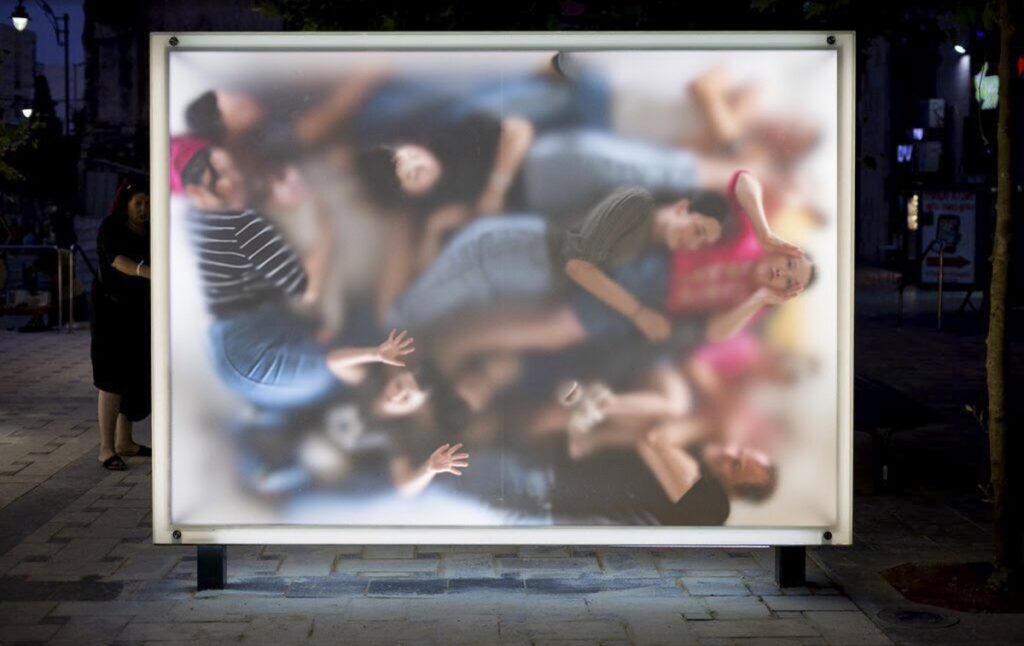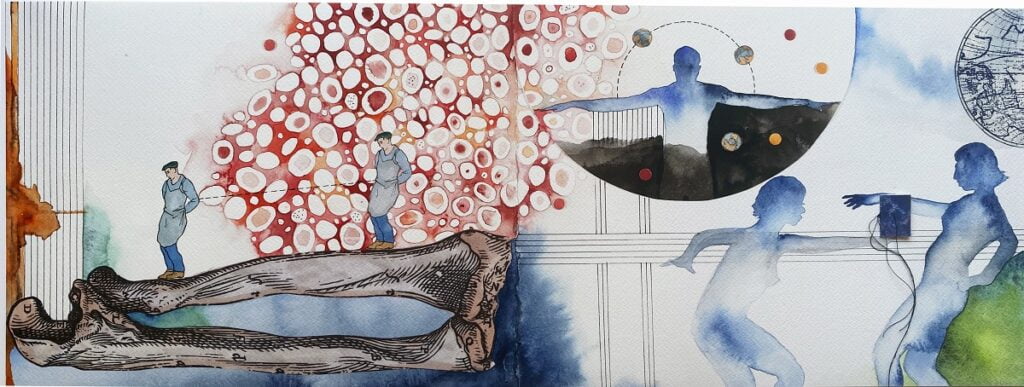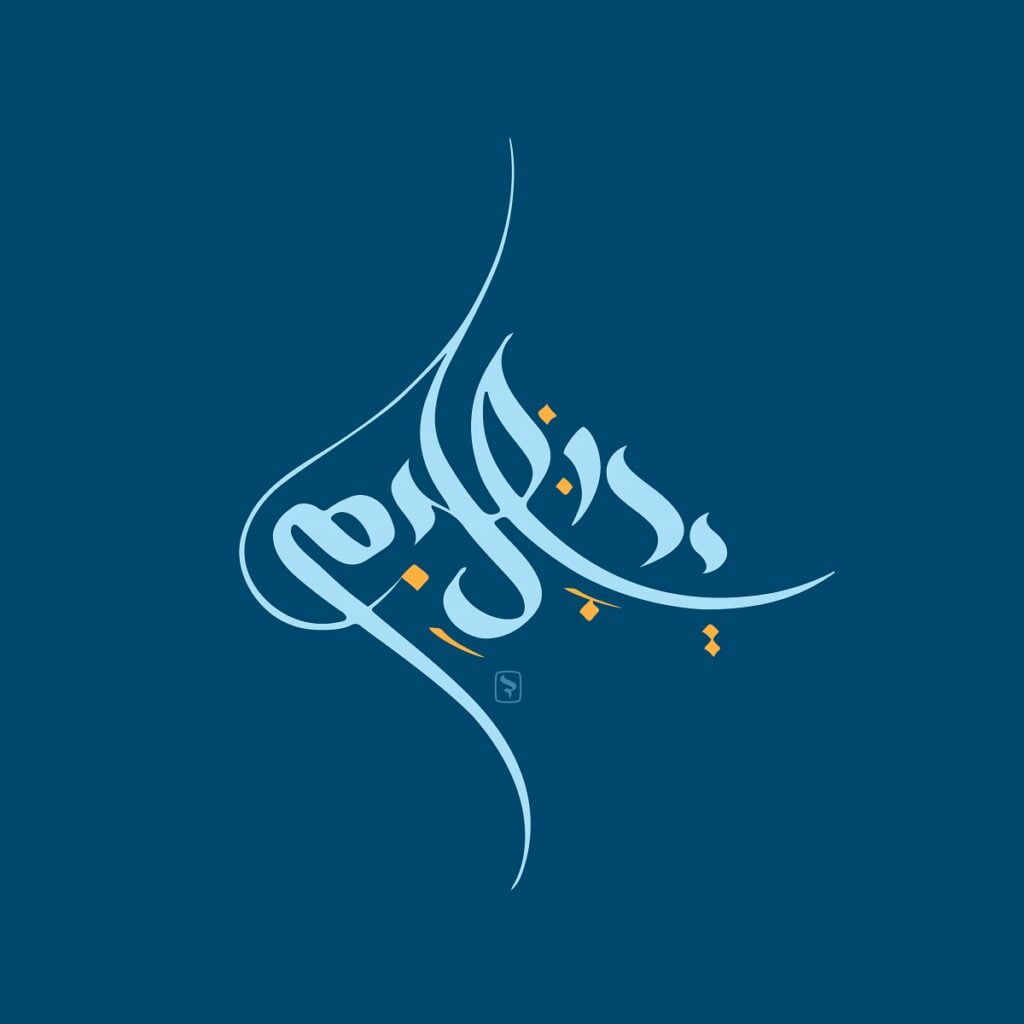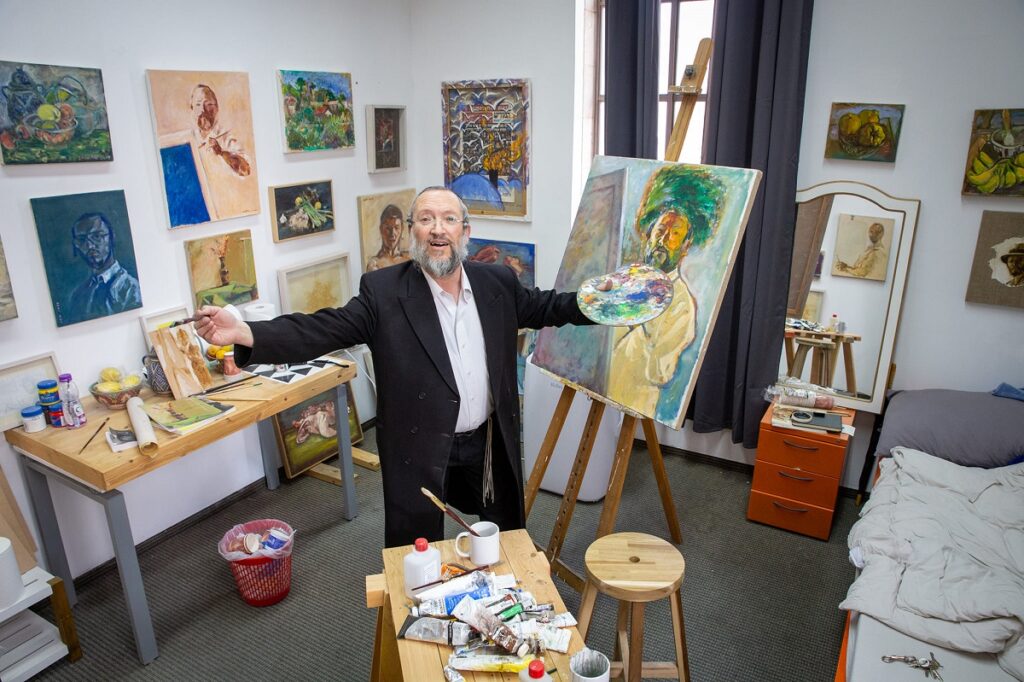The works of more than 300 artists from 10 countries are now on display in Jerusalem and online, as part of the fifth Jerusalem Biennale. The hybrid art festival, which has both an in-person and an online presence this year, is open to everyone.
Pandemic closures hit the art world hard, and artists, curators, and museum directors have been seeking new ways to exhibit safely.
This large-scale event features artists mainly from Israel but also from the USA, UK, Italy, Belgium, Turkey, Greece, Morocco, United Emirates, and Argentina. It also includes the first-ever grassroots cultural initiative between Israel and the United Arab Emirates.

The artists are showcasing their work in numerous locations around the city (and online) under the theme Four Cubits.
The Biennale kicked off last month with dozens of exhibitions, tours, lectures, art panels, and parties. Many of those events were simultaneously broadcast live on the Biennale’s Facebook page. For example, an exhibition of the work of Israeli artist Ruth Schreiber, who delves into a large spectrum of creation, was featured alongside a discussion on the technological developments in birth and a talk by Dr. Avraham Steinberg, a leading medical ethicist, and pediatric neurologist at the Ramban Synagogue. The festival’s Facebook page also broadcasts a talk on the old cafes of Jerusalem which took place at the famous Tmol Shilshom Cafe in the heart of the city.
Fittingly, the theme of this year’s bi-annual city-wide arts festival in Jerusalem — which ties together Jewish tradition and contemporary art — explores the notion of personal space and the way art functions in the home.
In Jewish tradition, a cubit, or ama in Hebrew, was an ancient measurement of the length of about 0.5 meters. Four cubits are about two meters – the two-meter circle surrounding a person in their personal space.

Those are also the two meters that the WHO (World Health Organization) suggests keeping at a distance from each other to avoid transmission of the SARS-CoV-2 virus, the Biennale’s Founder and Creative Director Rami Ozeri tells NoCamels.
“It was very symbolic. I thought it was so surprising that an ancient measurement that tells you what a private space is has become almost a scientific concept. It is very relevant to today and so interesting,” Ozeri says.
SEE ALSO: Jerusalem Botanical Gardens Launches Grand-Scale Augmented Reality Art Exhibit
In religious texts, four cubits is also used as a metaphor for a person’s private space. “We all ended up spending more time at home [in the past two years,]” Ozeri says, “It brought up the question — which I think is extremely important and not well-addressed at all so far — of how art functions in private spaces. So this year, the biennale is all about content and private space, creativity and private space. We want to expand the notion of the art experience.”
Usually, what happens is that during the Biennale, Ozeri says, is that he and his colleagues in the field will always invite the audience to come to have the “art experience” in a public space such as a gallery or a museum, and then go home.
“This year, we are asking what going on when you get back home? What is the role of art in your own four cubits? In your own living room or bedroom or kitchen? Does art exist there? Is art present there? In between the lines, we emphasize the importance of having good art, real art out in your private space,” he adds.
Three components
The Jerusalem Biennale has played a transformative role in the revitalization of the art scene in Jerusalem, bringing some of the most cutting-edge, creative, and inspiring exhibits and events to the city since 2013. The first Jerusalem Biennale, which was founded by Ozeri after visits to the Biennale in Venice and in Berlin, featured works by more than 60 artists and asked the question, “What is Contemporary Jewish Art?” Ozeri says contemporary art, not to be confused with the modern art movement of the early 20th century, is all about the art of today and includes drawings, videos, and installations.
Sign up for our free weekly newsletter
SubscribeOzeri, a religious man who studied philosophy and worked as an economist, and eventually took classes at the Bezalel art school, where he said he encountered many artists and people in the outside world that told him there were some unsolved issues with Jewish content in the Israeli art world.
“They felt like the Israeli art world would reject or marginalize them because of that content. So I decided I wanted to create a platform for art that was both contemporary and Jewish.

The 2021 Jerusalem Biennale’s program consists of three major components, all of which will work according to a hybrid model, with both an in-person and online presence.
#TakeMeHome is the core project of the Jerusalem Biennale this year and takes place in the Biennale’s permanent home in the historic building of Sha’arei Tzedek. Ozeri says this year’s exhibition of 200 contemporary artworks but more than a hundred artists “is the largest exhibition we ever had.” Visitors will enjoy an art viewing experience, mindful that at the end of their visit, they will be able to choose an artwork they would like to display in their home.

“What we figured — and what is actually happening — during the five weeks of the Biennale, is that people take a different look at the art. Because it’s not only something they want to understand, it’s also something they need to imagine would fit in their living room or bedroom,” Ozeri says, “We’re not asking people to buy the artwork. We’re giving them the opportunity to think about their homes as a place for art.”
At the end of the Biennale, some of the artworks will be loaned to the winners for a six-month period, after which they may purchase the work if they wish to do so.
The works of #TakeMeHome will be accompanied by a few related installations, among them a solo exhibition of the artist Sari Srulovitch and installations by Koen Vanmachelen (Belgium), Shuli Bornstein Wolf, and more.

Venues are hosting group exhibitions in different Jerusalem institutions, connecting architecture, history, and art. Among the selected venues is the Tower of David Museum, HaMiffal, Jerusalem Print Workshop, the art gallery of Mishkenot, the Agripas 12 Gallery, and the Gesher Guest House. Five of them feature the participation of international artists like Maktoub, an exhibition curated by Lenore Cohen-Mizrachi and Chama Mechtaly that hosts 10 calligraphy artists from the UAE and Israel. This is the first joint Israeli and Emirati grassroots art initiative in Israel.
SEE ALSO: Haifa Museum Dedicates Entire Space To Turmoil Of COVID-19 Pandemic
This collaborative calligraphy effort on canvas shows the similarities and differences between the written word in both Islamic and Jewish cultures. Mizrachi-Cohen, a Syrian-American Jew now living in Jerusalem, contacted Mechtaly with the idea for Maktoub following the signing of the Abraham Accords.

PHASEs, which stands for Private Homes Art Space Events, is a new model for intimate gatherings around art, developed by the Jerusalem Biennale in response to the constraints of the pandemic. Audiences will be invited to visit artistic private spaces for more intimate experiences around art, workshops, lectures, and conversations. Each project will be documented throughout the process, resulting in short online videos that may facilitate a more global conversation on what it means to bring art into the private space. Events include Haredi artist Motta Brim, the man who inspired the popular tv series Shtisel, talking about his art and his upbringing in his home and Anat Golan’s jewelry and Judaica exhibition the historic home of the father of modern Hebrew Eliezer Ben Yehuda. Bitya Roznak also hosts an event in the glassmaking studio in her backyard.
Gallery talks, panel discussions with artists and curators, music and dance performances, guided tours in English and Hebrew will continue online as well as in-person until December 30. Public venues will have individual opening events. Tickets this year for all public venues are free of charge, except for the Tower of David Museum.
Updated information is available at http://jerusalembiennale.org and on our Facebook page.
Related posts

Rehabilitation Nation: Israeli Innovation On Road To Healing

Israeli High-Tech Sector 'Still Good' Despite Year Of War





Facebook comments